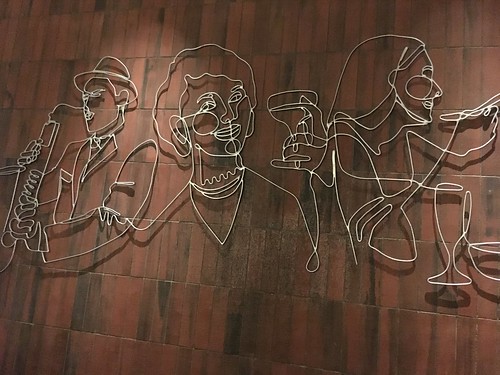Smart pvalues by means of a permutationbased nonparametric Fumarate hydratase-IN-2 (sodium salt) site testing (5000 permutations had been employed). All
Sensible pvalues via a permutationbased nonparametric testing (5000 permutations have been employed). All group comparisons are reported at p 0.05 immediately after Familywise Error (FWE) correction and, as recommended59,60, we report impact sizes as well as statistic values.Voxelbased morphometry.ResultsBehavioral information. A 2by2 repeated measures ANOVA on moral judgment data revealed the anticipated maineffects of intent (F(, 48) 27.778, p 0.00, p2 0.89), outcome (F(, 48) 22.02, p 0.00, p2 0.78), and their interaction (F(, 48) 30.393, p 0.00, p2 0.388). In other words, agents who acted with harmfulScientific RepoRts 7:45967 DOI: 0.038srepnaturescientificreportsFigure 2. Moral condemnation ratings across conditions. Complete distribution of moral condemnation ratings across situations is shown using mixture of box and violin plots96. Box plot inside the violin plot contains thick black line for the median and also the box indicates the interquartile variety, though the added rotated kernel density plot shows the probability density on the data at distinctive values. As may be noticed, there was additional variation in accidental and attempted harm instances, exactly where intent and outcome was misaligned, as in comparison with neutral and intentional circumstances.intent or who produced a damaging outcome have been condemned additional severely than those acting with innocent intention or who produced a neutral outcome, respectively (Fig. 2; for descriptive statistics, see Supplementary Text S5). On top of that, the intent and outcome details interacted such that the degree to which the presence or absence of dangerous consequence affected severity of moral condemnation depended on no matter whether the intent was neutral or damaging (higher difference in severity of moral judgment in accidental versus neutral comparison than intentional versus attempted comparison).Functional localizer outcomes.The gICA around the ToM localizer process revealed a element consisting from the regions involved in mentalizing (see Fig. (b)), which includes bilateral TPJ, PCPCC, dmPFC, TP, posterior STS, anterior STS, and so forth. (for much more information around the component characteristic, see Supplementary Text S2) All VBM analyses have been restricted to the binary mask comprising of voxels belonging to this network.Anatomical data.Neutral, attempted, and intentional harm conditions. No suprathreshold voxels  were located for constructive (higher GMV related with improved moral condemnation) or damaging (greater GMV associated with reduced moral condemnation) contrasts.Accidental harm condition. Regression analyses revealed that a lot more extreme moral condemnation for accidental harm was connected with reduced GMV in left (x 62, y two, z 2; 0.0252, TFCE 3.26; k 202; p(FWEcorrected) 0.002) anterior STS (aSTS) (see Fig. three). Note that although PubMed ID:https://www.ncbi.nlm.nih.gov/pubmed/26329131 we refer to this region right here as aSTS63, other research have also referred to the similar area with the anatomical label “middle temporal gyrus (MTG)”6,35,647. No suprathreshold voxels had been identified for positive contrast. Also, no suprathreshold voxels outside the localized ToM network have been located for any contrast or for any condition inside the wholebrain analysis.Data availability statement.Unthresholded VBM statistical maps of reported contrasts are obtainable on Neurovault68 at the following address: http:neurovault.orgcollections689. Each of the behavioral data are offered at: https:osf.ioakx6a.Offered that functional data had been also out there for every participant, we decided to discover post hoc regardless of whether the extent to which innocent int.
were located for constructive (higher GMV related with improved moral condemnation) or damaging (greater GMV associated with reduced moral condemnation) contrasts.Accidental harm condition. Regression analyses revealed that a lot more extreme moral condemnation for accidental harm was connected with reduced GMV in left (x 62, y two, z 2; 0.0252, TFCE 3.26; k 202; p(FWEcorrected) 0.002) anterior STS (aSTS) (see Fig. three). Note that although PubMed ID:https://www.ncbi.nlm.nih.gov/pubmed/26329131 we refer to this region right here as aSTS63, other research have also referred to the similar area with the anatomical label “middle temporal gyrus (MTG)”6,35,647. No suprathreshold voxels had been identified for positive contrast. Also, no suprathreshold voxels outside the localized ToM network have been located for any contrast or for any condition inside the wholebrain analysis.Data availability statement.Unthresholded VBM statistical maps of reported contrasts are obtainable on Neurovault68 at the following address: http:neurovault.orgcollections689. Each of the behavioral data are offered at: https:osf.ioakx6a.Offered that functional data had been also out there for every participant, we decided to discover post hoc regardless of whether the extent to which innocent int.